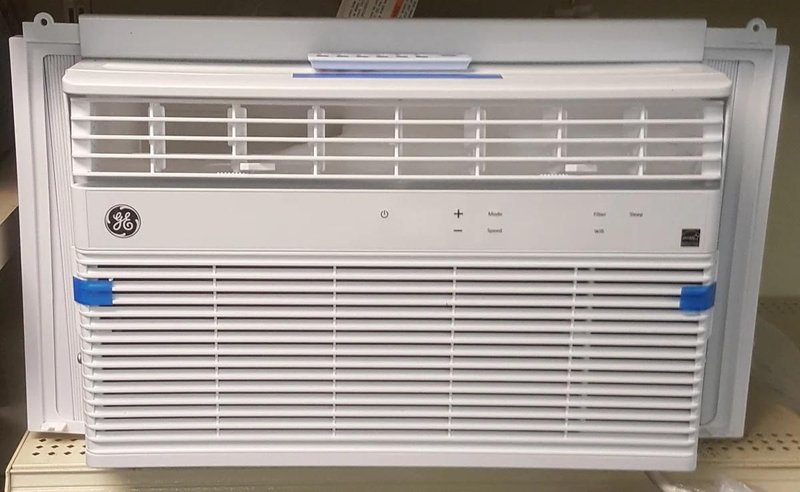
Imagine driving a car and suddenly the check engine light comes on. You might think, “Hey, the car seems to run fine,” and decide to just keep driving. But deep down, you know that ignoring it might lead to bigger problems down the road. The same logic applies to your GE air conditioner when it flashes an error code like E2. Ignoring it might seem convenient, but it could lead to more complicated issues over time. The E2 error code isn’t just there for decoration—it’s a signal from your AC that something requires your attention. So, what exactly is E2 trying to tell you? Let’s dive in and explore.
Understanding the E2 Error Code
The E2 code on GE air conditioners typically indicates an issue with the unit’s evaporator temperature sensor. In simple terms, think of the evaporator as the part of your AC that cools the air before it blows out into your room. The temperature sensor’s job is to monitor the air being cooled, much like a thermostat in your home. When the sensor acts up, it sends the E2 signal to alert you that it’s not getting the correct readings.
Why does this matter? Well, if the sensor isn’t working correctly, the air conditioner might not adjust the cooling process efficiently. This can mean that your room doesn’t get as cool as you want, or the unit runs longer than needed, wasting energy and possibly hiking up your electricity bill. It’s like driving a car with a malfunctioning speedometer—you can still drive, but you won’t know how fast you’re going, which could lead to issues.
So, can you ignore it? Technically, the air conditioner might still function, but ignoring the E2 code is like turning a blind eye to a potential leak in your house. It could lead to inefficiencies and, in some cases, make an existing issue worse. The best course of action is to investigate and address what’s causing that pesky error code to flash.
Causes and Effects of the E2 Code
The E2 error code can stem from a few different issues with the evaporator sensor. It could be a fault in the sensor itself, which might occur due to wear and tear or simply a manufacturing defect. Alternatively, it could be a wiring issue where the connection to the sensor is loose or damaged. It’s a bit like your phone not charging properly because the cable isn’t plugged in right.
Another possibility? The sensor might be dirty or obstructed, preventing it from reading the temperature accurately. Imagine trying to read a thermometer that’s covered in dirt and grime—it’s bound to give you false readings. If the sensor can’t do its job, not only do you risk uncomfortable room temperatures, but the strain on the air conditioner might lead to premature wear on other parts.
Ignoring the problem doesn’t just mean a potential rise in energy bills. It could also mean decreased lifespan for your air conditioner. You might find yourself in need of repairs or even a replacement sooner than expected. So, the E2 code is more than a mere inconvenience; it’s a cue to take action to keep your AC running smoothly.
How to Address the E2 Error
Alright, now that you know why that E2 code shouldn’t be ignored, what should you do about it? First, you can start by checking the user manual that came with your air conditioner. It might offer specific troubleshooting tips tailored to your model. It’s like checking a map before you start a road trip—you want to have an idea of the route you’re taking.
Next, try a reset. Sometimes, the error might disappear with a simple on-off cycle. Unplug the unit, wait a couple of minutes, and plug it back in. This can act as a refresh button for your AC, much like rebooting a computer to clear temporary glitches. If the error persists, it’s time to roll up your sleeves a bit more.
Inspect the sensor and the wiring if you’re comfortable opening the unit. Ensure the sensor is clean and correctly connected; secure any loose wires. If this sounds intimidating, there’s no shame in calling a professional. Air conditioners have delicate components, and an expert can diagnose the problem with precision. The key takeaway here is not to leave the error unattended, ensuring your comfort and the long-term health of your air conditioner.
Preventative Tips to Avoid Future Issues
Taking proactive steps can save you future headaches and keep that E2 error at bay. Regular maintenance is crucial for the longevity of any home appliance, and your air conditioner is no exception. Just as you wouldn’t neglect to change the oil in your car, you shouldn’t skip out on giving your AC some TLC.
Start with routine cleaning. Dust and debris can accumulate over time, affecting sensors and other components. Gently clean the accessible parts of your air conditioner, ensuring nothing obstructs the sensors. Think of it like brushing your teeth regularly to prevent cavities and maintain oral health.
Additionally, have your air conditioner serviced by a professional at least once a year. This is like a health check-up for your AC—catching minor issues before they turn into costly problems. A technician can perform in-depth cleaning and inspect connections that might not be as easy for you to reach.
Lastly, pay attention to how your air conditioner is running. If you notice odd behavior or repeated error codes, address them promptly. A bit of vigilance can go a long way in preserving your unit and keeping your living space comfortable year-round. Remember, taking swift action keeps your home cool and your air conditioner happy!